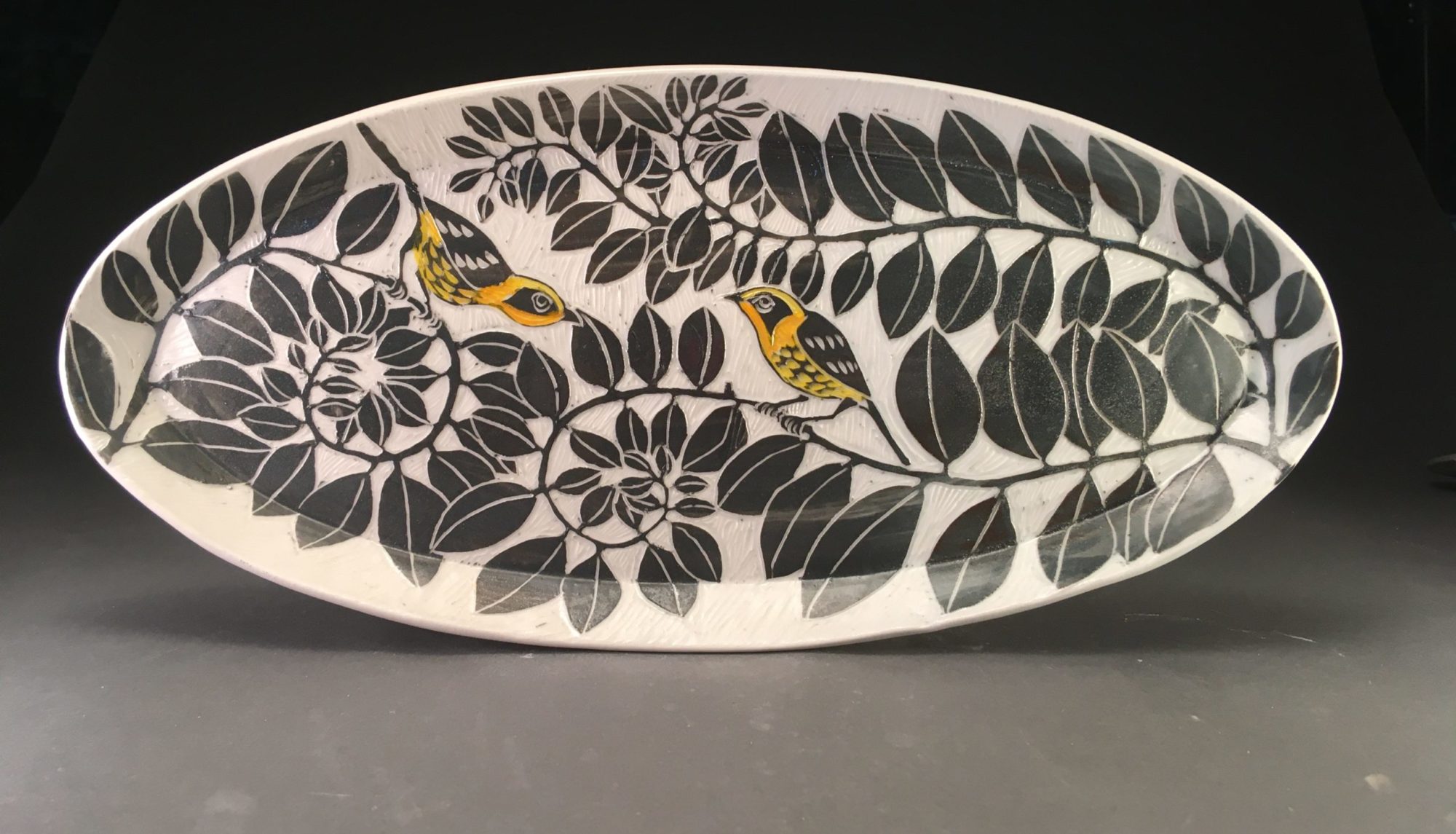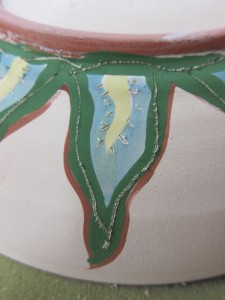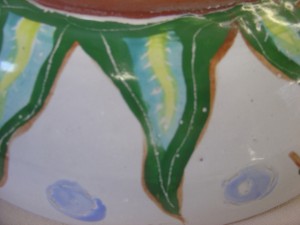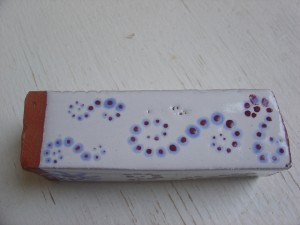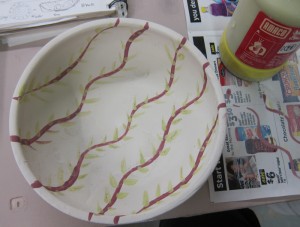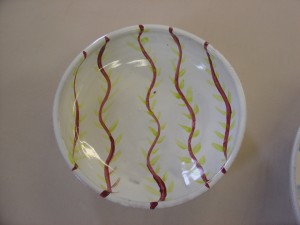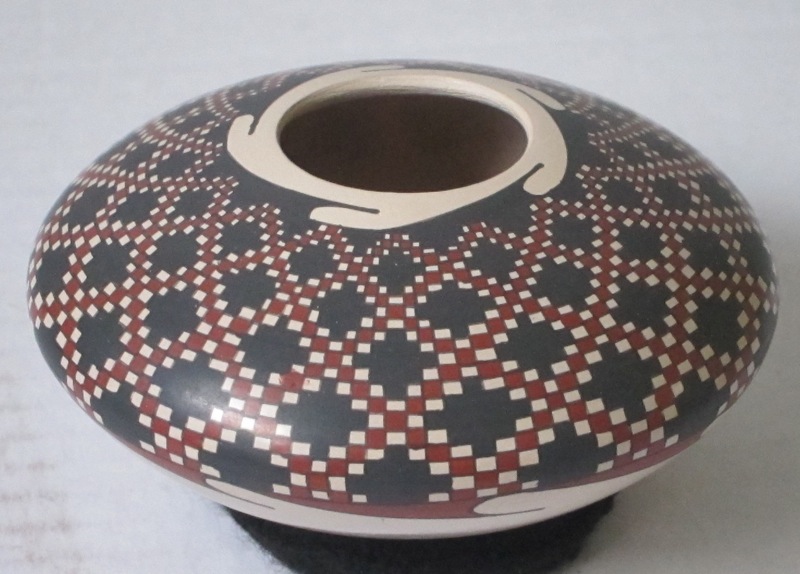I recently taught a workshop as a brief introduction to Majolica.
I used the word “creamy” very frequently. It really is the best word to describe the basic white glaze that defines the category and gives Majolica its distinctive look.
First of all let me say that most of what I know I learned from Kelly Kessler and I still find her work inspiring, thought provoking and beautiful.
I brought out some pieces by her,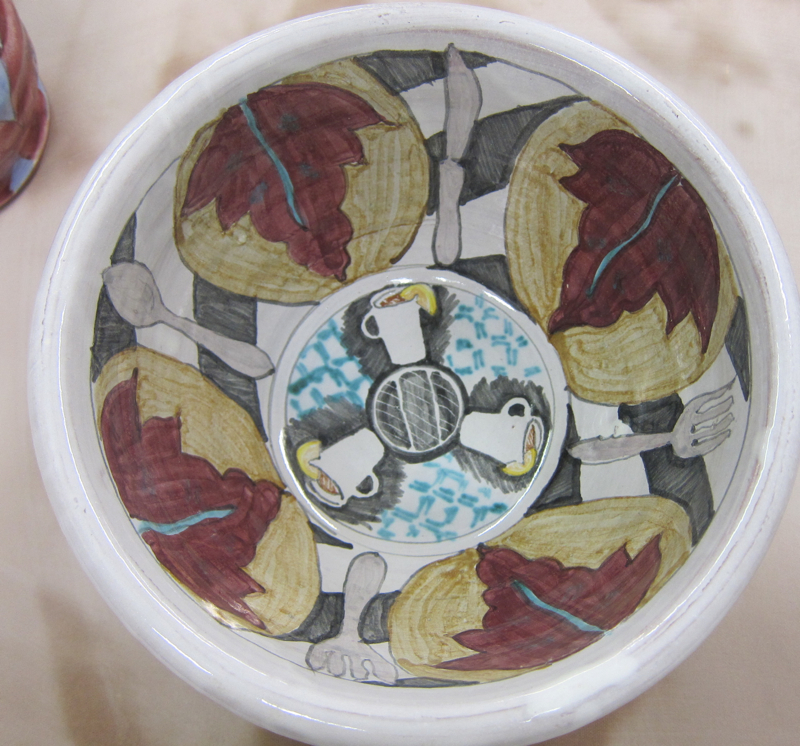
two small boxes I’d bought in Italy,  sitting next to an Angler Fish mug by Karin Kraemer
sitting next to an Angler Fish mug by Karin Kraemer
and a couple of old pieces of mine.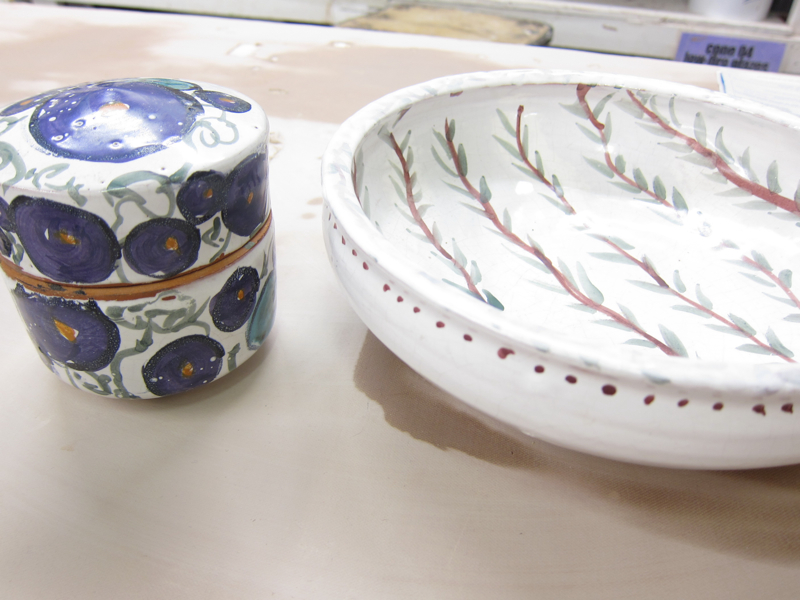
I wasn’t sure how long it had been since I really spent some time making Majolica work but the date on the bottom of the bowl was 1994!
Basically, Majolica was Europe’s response to Chinese Porcelain.
People were crazy for all that pristine white-ware coming out of China. This was eventually answered with a thick white glaze (made with tin)and colorful pigments that sink into its surface. This first began to happen during the renaissance in Italy so Italy is most famous for it’s Majolica but Spain, England and Mexico all have similar ceramic traditions.
Majolica, as it is practiced most commonly now is on terra cotta low fire clay which is dipped in or sprayed with a base coat of a creamy majolica glaze.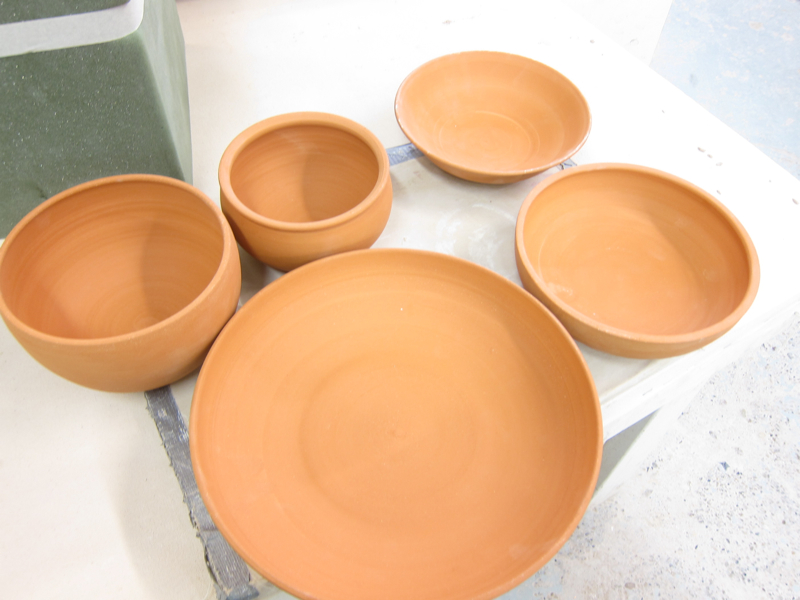
At Lill, we use a nice recipe from Linda Arbuckle (http://lindaarbuckle.com/index.html )and commercial pigments from Amaco™ 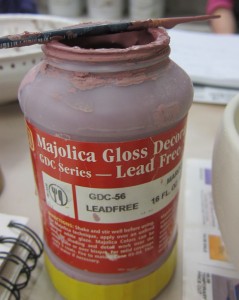
After that dries, you can then apply your pattern or images. Some people draw very lightly on the surface with pencil- I’ve been known to use a highlighter even but for these I just had some sketches and applied it freehand. Good brushes are key. You need something that you can load up but will make a fine line. I like long thin brushes.
For the “sea weed” on the underside of my octopus bowl, I scratched through to thewhite but not down to the clay body.
Karin Kraemer uses this technique to good effect on her Angler fish mug. Also on her mug, you won’t see any of the white undercoat except for the belly of her fish. She painted the entire rest of the mug with a tomato red. 
I also did a bit of scratching (sgraffito) on the octopus 
Here it is fired. The main thing to know about majolica is that it’s not very forgiving of mistakes when one is painting on the colorful pigments.
 You can see it is a lot more transparent- more than I wanted actually. Every brush mark shows so you really have to be careful how you apply the pigments- you can not just make an outline and daub it on to fill it in- it’s best to have some direction and grace in your application. Here is the underside:
You can see it is a lot more transparent- more than I wanted actually. Every brush mark shows so you really have to be careful how you apply the pigments- you can not just make an outline and daub it on to fill it in- it’s best to have some direction and grace in your application. Here is the underside: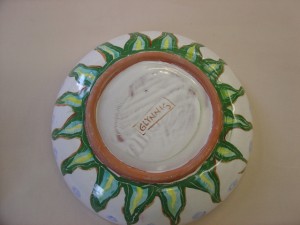
This was fired at around cone 04. That is low fire and so the clay body won’t be as dense and therefore as strong as a cone 6 or 10 pot- but these pieces do hold up! Another student brought in commercially made terra cotta pieces: flower pots! and decorated those.
With Majolica the possibilities are nearly endless and it’s particularly great if you like bright colors.
But, as you can see in this Roberta Massuch piece, it can also be used to get a kind of pen and ink effect and it also doesn’t have to cover the entire piece. She’s used it selectively and contrasted it with texture on other parts of her pot.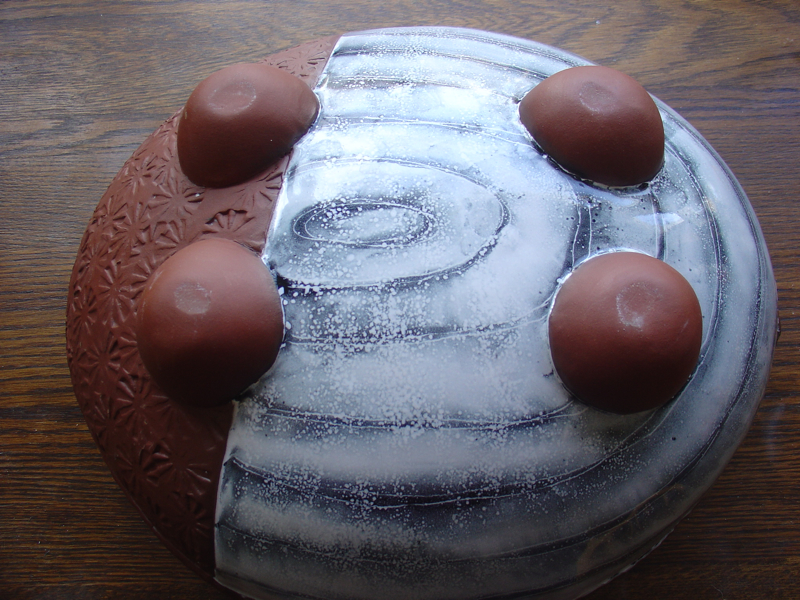
This is terry’s test- she’s wanted to see how it works in dots!
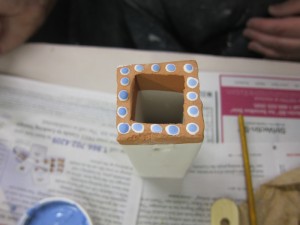
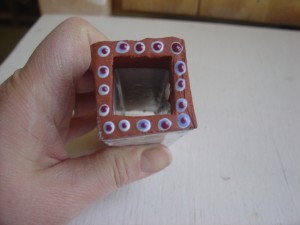
I also copied one of my own pieces -what I call my “willow pattern”. Here it is before and after:
So there you have it, the very briefest of introductions to Majolica. What I like about it are the bright colors and the endless possibilities of surface decoration coupled with the near instant gratification of low-fire. This is not something that needs to be coddled along- you pop it in an electric kiln and voila! Something lovely, useful and sturdy.
If you want to look at more contemporary majolica work I suggest you poke around Arbuckle’s site and also that of Karen Kraemer or just google Majolica! I know there are countless more talented Majolica artists and you are welcome to put them in comments.
